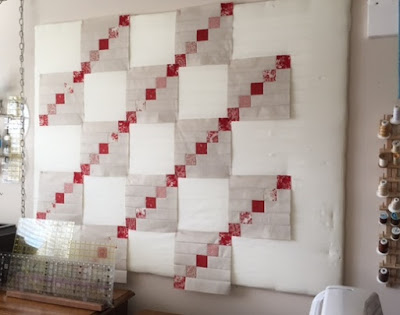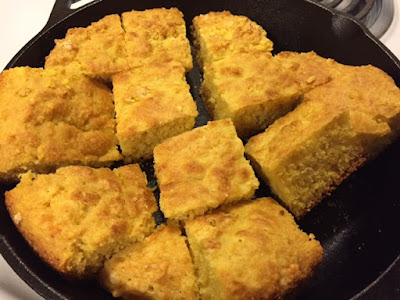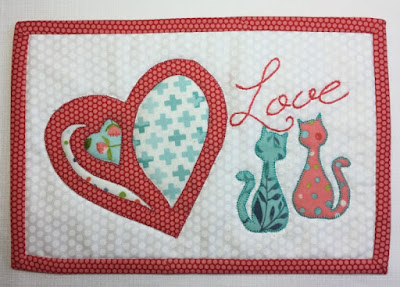On the first day of no designing, I turned my kitchen inside out and upside down. I sorted, I tossed, I gave things away, and I scrubbed. The feeling of accomplishment was wonderful. On the second day, I organized closets. On the third day, I cooked a big pot of chicken soup. In the afternoon of the same day I baked a totally scrumptious cornbread in my cast iron skillet. On the fourth day, I sorted and organized my sewing room.
On the fifth day, I began to sew a wedding quilt for my granddaughter. The first twelve blocks are finished, and I've collected pattern ideas for the empty places between blocks. I think I'll include both pieced and appliqued blocks. I'll update my blog with progress reports, and, possibly, a few tutorials as this quilt develops.
The Recipe
I've used my cast iron skillet quite a bit since I got it, but this was the first time I tried baking with it. I'll never again make cornbread any other way. It was that good. I substituted buttermilk for the milk in the recipe on the cornbread box, added baking soda as well as baking powder, preheated the skillet in the oven, and shortened the baking time.
The results were beautiful - thick, fluffy pieces of perfectly golden cornbread that were less crumbly than any I've made before. I cut the bread right in the pan, and the pieces slipped out without the slightest bit of sticking.
I couldn't resist digging in right away. I had two pieces of hot cornbread with melting butter for my afternoon snack. I meant to eat only one, but ... well, you know.
Important things to remember:
1. Pre-heat the skillet.
While the oven was heating with the greased skillet inside, I mixed the dough.
2. Separately mix wet and dry ingredients before combining.
All of the dry ingredients need to be mixed together in a medium size mixing bowl. The wet ingredients, buttermilk, oil, and egg, are mixed together separately.
3. Don't over mix the dough.
Pour the wet ingredients onto the dry, and stir with a fork. Stir only until the dry ingredients are moist. The dough will be lumpy and thick.
Pull the oven rack holding the hot skillet out far enough to scoop the cornbread dough into the skillet. Spread the dough fairly evenly with a spatula, and bake.
Recipe:
Cast Iron Skillet Cornbread
1 1/4 c flour
3/4 c corn meal
1/4 c sugar
1 tsp baking powder
1 tsp baking soda
1/2 tsp salt
1 c buttermilk
1/4 c vegetable oil
1 egg
1. Grease the skillet with vegetable oil or shortening.
2. Place the skillet on a middle rack in the oven and preheat the oven to 400 °.
3. Combine dry ingredients in a medium mixing bowl.
4. Combine buttermilk, vegetable oil, and egg in a measuring cup or small bowl, and beat with a fork.
5. Pour wet ingredients into the bowl of dry ingredients. Stir with a fork only enough to moisten the dry ingredients. The dough will be thick and a bit lumpy.
6. Open the oven door, pull out the rack holding the skillet, and scoop the dough into the hot skillet. Smooth with a spatula.
7. Bake 15 to 18 minutes, or until a toothpick inserted in the center comes out clean.
8. The cornbread can cool in the skillet on a cooling rack, or it can be cut and served hot.
 |
| Chicken soup with cornbread. Comfort food at it's best. |
Hope you have a wonderful week!


















































